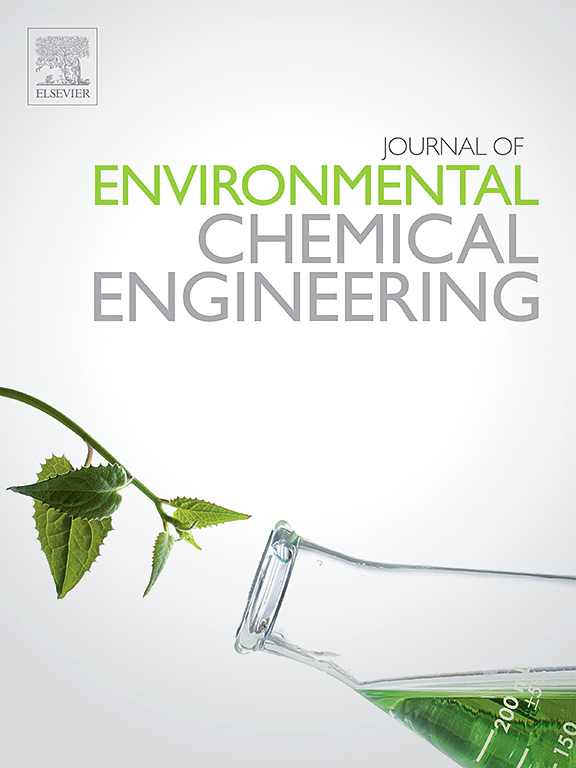Advances of copper-based metal-organic frameworks and their derivatives in nitrate reduction to ammonia
IF 7.4
2区 工程技术
Q1 ENGINEERING, CHEMICAL
引用次数: 0
Abstract
Ammonia (NH3) is an important chemical raw material and a good nitrogen source. The industrial ammonia production process consumes a lot of fossil fuels and produces secondary pollution. Electrochemical nitrate reduction (eNO3RR) has attracted extensive attention due to its low cost, simple process and no secondary pollution. While the lack of effective electrocatalysts limits the NH3 yield and selectivity of eNO3RR. Metal-organic frameworks (MOFs) are an ideal candidate for electrocatalytic reduction of nitrate to ammonia (ENRA) due to their unique structure and properties. The advance of Cu-based metal-organic frameworks and their derivatives in ENRA are summarized to provide ideas for the preparation of catalysts. The characteristics of MOFs and their derivatives are explored, the applications in ERNA are analyzed, and the structure-activity relationship and reaction mechanism are dissected to help understand deeply the role during the reaction process. Finally, some perspectives are offered, including the current challenges and prospects.
氨(NH3)是一种重要的化工原料和良好的氮源。工业合成氨生产过程消耗大量化石燃料,并产生二次污染。电化学硝酸盐还原法(eNO3RR)因其成本低、工艺简单、无二次污染而受到广泛关注。但由于缺乏有效的电催化剂,限制了 eNO3RR 的 NH3 产率和选择性。金属有机框架(MOFs)因其独特的结构和性能,成为电催化硝酸还原氨(ENRA)的理想候选材料。本文总结了铜基金属有机框架及其衍生物在ENRA中的应用进展,为催化剂的制备提供了思路。探讨了 MOFs 及其衍生物的特点,分析了其在 ERNA 中的应用,并剖析了其结构-活性关系和反应机理,以帮助深入理解其在反应过程中的作用。最后,提出了一些展望,包括当前的挑战和前景。
本文章由计算机程序翻译,如有差异,请以英文原文为准。
求助全文
约1分钟内获得全文
求助全文
来源期刊

Journal of Environmental Chemical Engineering
Environmental Science-Pollution
CiteScore
11.40
自引率
6.50%
发文量
2017
审稿时长
27 days
期刊介绍:
The Journal of Environmental Chemical Engineering (JECE) serves as a platform for the dissemination of original and innovative research focusing on the advancement of environmentally-friendly, sustainable technologies. JECE emphasizes the transition towards a carbon-neutral circular economy and a self-sufficient bio-based economy. Topics covered include soil, water, wastewater, and air decontamination; pollution monitoring, prevention, and control; advanced analytics, sensors, impact and risk assessment methodologies in environmental chemical engineering; resource recovery (water, nutrients, materials, energy); industrial ecology; valorization of waste streams; waste management (including e-waste); climate-water-energy-food nexus; novel materials for environmental, chemical, and energy applications; sustainability and environmental safety; water digitalization, water data science, and machine learning; process integration and intensification; recent developments in green chemistry for synthesis, catalysis, and energy; and original research on contaminants of emerging concern, persistent chemicals, and priority substances, including microplastics, nanoplastics, nanomaterials, micropollutants, antimicrobial resistance genes, and emerging pathogens (viruses, bacteria, parasites) of environmental significance.
 求助内容:
求助内容: 应助结果提醒方式:
应助结果提醒方式:


